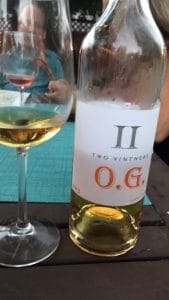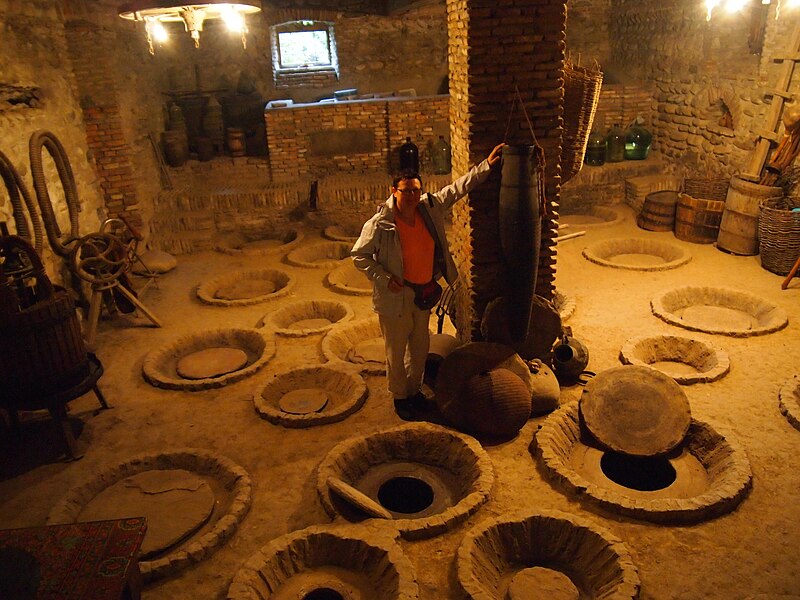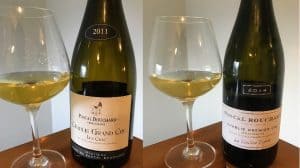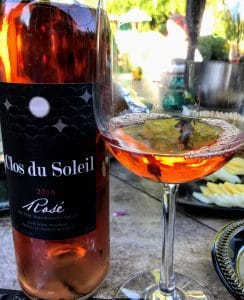Fall is here which means shorter days but longer nights to spend curled up next to a great wine book. Here is a look at some of the upcoming October releases that I’m excited to get my hands on.
Amber Revolution: How the World Learned to Love Orange Wine by Simon J. Woolf (Hardcover release October 2nd)

This Two Vintners “OG” Gewürztraminer made in an orange wine style with extended maceration blew me away with how complex and delicious it was.
For many wine lovers, “orange wine” is the biggest wine trend that they’ve heard of but haven’t had the chance to try yet.
It’s tempting to call this a fad and chalk it up to Millennials’ latest fancy. But this is a really old winemaking style that has been around for as long as wine has been made. At its most simplest, orange wine is basically just white wine that has spent time in contact with grape skins. This exposes it more to oxygen than the modern method of quickly pressing white grapes and processing them anaerobically.
While a couple 2017 releases like Marissa A. Ross’s Wine. All the Time, Master of Wine Isabelle Legeron’s Natural Wine and Alice Feiring’s The Dirty Guide to Wine touched a little on orange wine, to the best of my knowledge, Amber Revolution is the first book devoted exclusively to the topic.
Judging by the recent popularity of the category, Woolf’s book is quite timely. Here he covers the history and production methods behind orange wines, as well as profiles 180 producers in 20 countries.
At this year’s Louis Roederer international Wine Writers’ Awards, Simon Woolf took home the Domaine Ott International Feature Writer of the Year award for his work at Meininger Wine Business International, Decanter and blog The Morning Claret.
Update:
On Instagram Simon Woolf had this advice for folks wanting to get a copy of his book. “Btw although in the US the book is only available from October, in Europe it can also be ordered direct from my site. Also for US customers, best to order direct from the publisher.”
Kevin Zraly Windows on the World Complete Wine Course: Revised, Updated & Expanded Edition by Kevin Zraly (Hardcover release October 16th)

The new edition of Windows on the World likely will also touch on orange wine and the renaissance in Georgian winemaking of using Kvevri (Qvevri) amphora jars buried in the ground to ferment and age wine.
From the very first edition in 1985, Kevin Zraly’s Windows on the World books have been a benchmark standard in wine education.
In addition to his Windows on the World wine classes and books, Zraly has also authored the very useful wine texts The Ultimate Wine Companion: The Complete Guide to Understanding Wine by the World’s Foremost Wine Authorities and Red Wine: The Comprehensive Guide to the 50 Essential Varieties & Styles with Mike DeSimone and Jeff Jenssen (authors of Wines of California that I mentioned in last month’s Geek Notes).
Frequently updated, the Windows on the World series has grown to include a pronunciation guide (Kindle only), a tasting notebook and food pairing companion.
The current 2018 edition has been expanded to 432 pages (up from 384 pages in the 2016 edition). It includes more detailed coverage of South America, Australia, China and New Zealand with new maps and infographics.
For geeks on a budget, there is one advantage of the frequent updates and releases. You can get used copies of previous editions of Windows on the World super cheap on Amazon. For instance, the 2012 edition is going for around $1.30 for the paperback version. While a tad outdated, at 352 pages it still covers the basics and the classic wine regions very well.
The Sommelier’s Atlas of Taste by Rajat Parr and Jordan Mackay (Hardcover release October 23rd)
This is probably the book that I’m most excited for because of the atlas’ focus on blind tasting. As the Amazon description notes:
“There are books that describe the geography of wine regions. And there are books that describe the way basic wines and grapes should taste. But there are no books that describe the intricacies of the way wines from various subregions, soils, and appellations should taste.”
Any wine student seeking higher level certifications through the Court of Master Sommeliers or the Wine Spirit & Education Trust should be intimately familiar with the wines on the Probable List of Examinable Red Grape Varieties, Examinable White Grape Varieties and the Certified Sommelier Examination Grape Varieties & Growing Regions.
All these wines will have distinctive profiles (typicity) with the examination board picking examples that demonstrate these distinctions well. Not only do you need to train yourself how to identify these wines, when you get to examinations like those of the Institute of Masters of Wine you will also have to explain why these distinct profiles exist (terroir, viticultural decisions, winemaking, etc).
Dearth of Blind Tasting Resources
There are not many resources out there tackling blind tasting and typicity from an examination point of view. Of course, there is material from WSET and CMS that you get with classes but outside sources are hard to find. Neel Burton’s The Concise Guide to Wine and Blind Tasting has been the closest I’ve found. But even that strays more into a “Windows on the World” type overview instead of getting into the nitty gritty details of teaching you to look for this while tasting a Chablis Grand Cru like Les Clos and this while tasting a Chablis Premier Cru like Montmains, etc.

I’ll be honest. At this point in my studies, all I can tell you is that they are both delicious.
Parr and Mackay’s book looks like it’s going to fill in that sorely needed niche–at least regarding terroir.
To understand the role of viticulture and winemaking decisions on the taste of wine, James Halliday and Hugh Johnson’s The Art and Science of Wine and Jamie Goode’s The Science of Wine: From Vine to Glass are two of the best books I’ve found so far.
Vines and Vintages: A Taste of British Columbia’s Wine History by Luke Whittall (Paperback release October 30th, 2018)
I’m only about 3 to 6 hours away from the wine regions of the Okanagan and Vancouver Island. Yet, in all practicality, the wines of British Columbia might as well be from China. Here in the US, they are incredibly difficult to find. Even restaurants in Vancouver are far more likely to offer French, Australian and Californian labels instead of local BC wines.

While I haven’t been overly impressed with the Bordeaux varieties in BC, this 2016 Clos du Soleil Cab Franc/Cab Sauv rose from the Upper Bench of the South Similkameen Valley was quite tasty.
But every time I do eventually get my hands on wine from BC, I tend to enjoy them. It’s clear that this is a growing industry. With the influence of climate change, it is only going to become more significant on the world’s wine stage. This is definitely an area worth exploring.
The few other books that I’ve came across dealing with BC wines have been a brief inclusion in Cole Danehower’s Essential Wines and Wineries of the Pacific Northwest and some of John Schreiner’s (a bit outdated) works The British Columbia Wine Companion (1997) and Chardonnay & Friends: Variety Wines of British Columbia (1999).
But with 370 pages, I can see Luke Whittall (already an established authority on BC wines with his blog and podcast at Wine Country BC) going into far more detail about the British Columbia wine scene and the remarkable growth it is has seen in the last 20 years.
